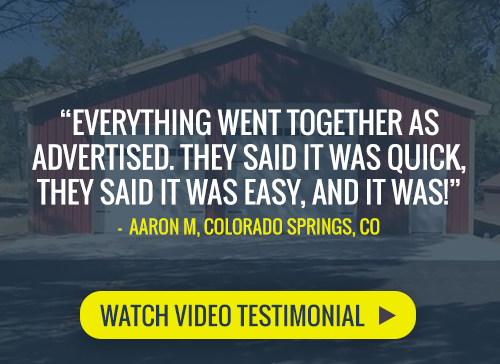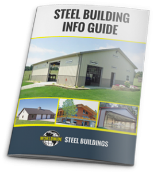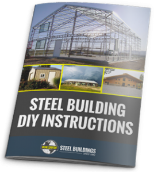Winter Maintenance For Steel Buildings
Roof Snow Removal Guidelines
- Roof snow accumulations in excess of the specified design loading criteria can cause significant distress to your building’s structural system. Snow can build up in areas around firewalls, parapet walls, valleys, dormers, and on lower roof levels where a roof step occurs. Since the density of snow varies depending on weather conditions during and after a snow fall, it is not possible to determine a single value for the allowable height of snow that a building can safely support.
- Underlying snow density increases due to melting from the building’s heat loss and as water is absorbed from the melting snow above. As weather and temperature changes continue, ice may build up under the snow layers further increasing the building’s roof loading intensity. This ice buildup also causes additional water back-up on the roof deck.
- The most severe condition occurs when rain falls on a roof system already loaded by snow. In this case, the snow absorbs the rain water, and loads can approach the weight of water (62.4 pounds per cubic foot, or 5.2 pounds per inch of depth). This condition must be monitored with extreme caution.
The following procedure may be used as a guideline for responding to roof overload conditions due to extreme snow and ice buildup conditions.
Snow Removal:
- Visually inspect the roof system to identify unusual deflections of frames, purlins, or joists. Starting in this area, remove approximately one-half of the snow depth in a pattern that does not cause an unbalanced loading condition on the frames or purlins.
- In general, the shoveling pattern should progress from each endwall of the building towards the center. On larger roof areas, additional people working from the center of the building to the ends is recommended.
- Along the building width, remove snow from the eave towards the ridge, sliding the snow off the roof over the gutter. On gabled buildings, remove the snow on both sides of the ridge at the same time.
- Remove the remaining half of the snow depth in the same manner as described above.
- Never use metal shovels or “scrape” the roof down to the surface of the panel. Remember, the objective is to relieve the excess loading condition due to the weight of the snow, not to completely clear the roof panel of all snow and ice. Attempting to scrape the roof may result in broken fasteners and loose compression hoods, creating roof leaks.
- Keep gutters, downspouts and roof drains open and free flowing to prevent water backup and ice build up on the roof system. Ice damming conditions are especially likely on the north side of a building and in shaded areas. Installing heat tape in gutters and downspouts can also be used as a precaution; however, heat tapes may not be 100% effective in extremely low temperatures and should be checked regularly.
Watch for extreme deflections and listen for unusual noises when snow and ice buildup conditions exist.
Safety Guidelines:
- Always provide proper safety precautions when working on the roof.
- Pay special attention to and be aware of Translucent Roof Panel locations. These panels are not intended to support roof foot traffic loads.













